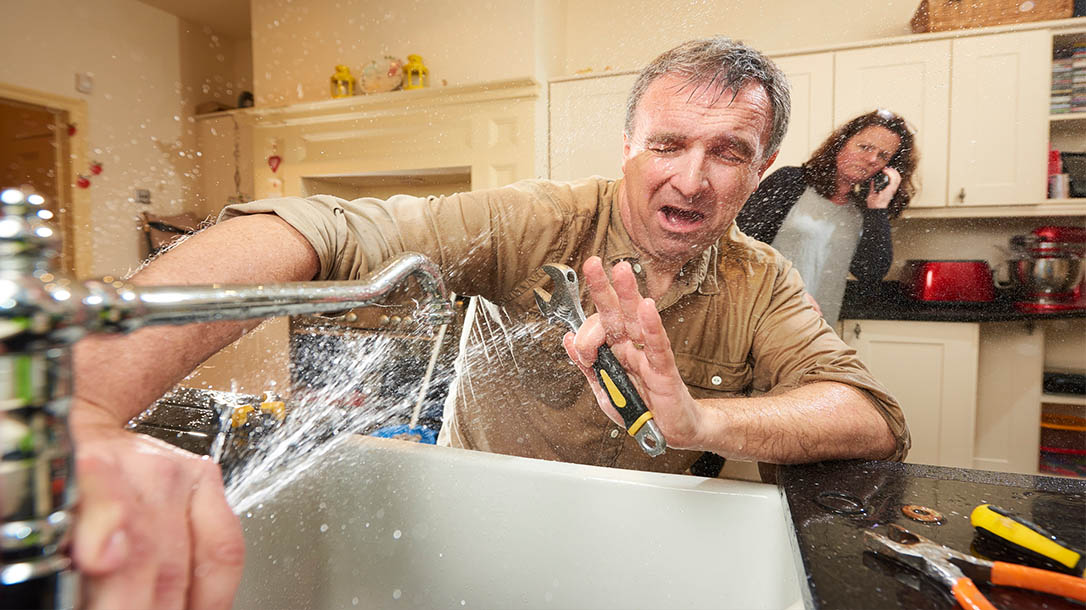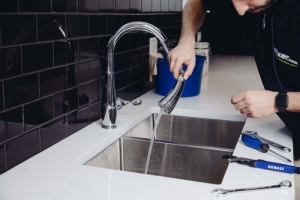Understanding the Importance of Repairing a Leaking Faucet
Understanding the Importance of Repairing a Leaking Faucet
Blog Article
In this article underneath you can find more professional tips in relation to Why It's Important to Fix Leaky Faucets.

Leaking taps may feel like a minor inconvenience, however their influence goes beyond just the aggravation of the noise. From drainage to sustaining unnecessary monetary prices and wellness threats, neglecting a leaking tap can bring about numerous consequences. In this write-up, we'll explore why it's essential to resolve this common family issue immediately and efficiently.
Wastefulness of Water
Environmental Impact
Trickling taps contribute considerably to water waste. According to the Epa (EPA), a solitary tap trickling at one drip per second can squander greater than 3,000 gallons of water annually. This not just pressures water sources yet also affects environments and wild animals depending on them.
Financial Prices
Boosted Water Costs
Past the ecological influence, trickling taps can blow up water costs considerably. The accumulated wastefulness over time equates right into greater utility costs, which could have been avoided with timely repairs.
Potential Home Damage
Moreover, prolonged leaking can result in damage to fixtures and surface areas bordering the faucet. Water accumulation can cause staining, deterioration, and also structural issues if left neglected, causing extra repair work costs.
Health Problems
Mold And Mildew and Mildew Development
The continuous presence of moisture from a trickling tap produces an optimal environment for mold and mildew and mildew growth. These fungis not only endanger indoor air top quality but additionally present health and wellness risks, specifically for individuals with respiratory system conditions or allergies.
Waterborne Conditions
Stagnant water in trickling faucets can end up being a breeding ground for microorganisms and other virus, enhancing the risk of waterborne illness. Contaminants such as Legionella germs thrive in stagnant water, possibly resulting in severe diseases when consumed or inhaled.
DIY vs. Specialist Repair work
Benefits and drawbacks of DIY Repair Service
While some may attempt to deal with a dripping tap themselves, DIY repair services come with their own collection of challenges. Without appropriate expertise and tools, DIY efforts can aggravate the issue or bring about incomplete repair services, lengthening the problem.
Advantages of Working With a Professional Plumber
Hiring an expert plumber makes certain that the underlying cause of the dripping tap is dealt with properly. Plumbers possess the know-how and tools to detect and repair faucet issues efficiently, saving time and lessening the risk of additional damages.
Step-by-Step Overview to Dealing With a Dripping Tap
Tools Called for
Prior to attempting to fix a leaking tap, collect the necessary tools, including an adjustable wrench, screwdrivers, replacement parts (such as washing machines or cartridges), and plumber's tape.
Usual Tap Issues and Their Solutions
Recognize the sort of tap and the certain concern creating the drip. Usual issues consist of worn-out washing machines, corroded shutoff seats, or faulty O-rings. Describe supplier guidelines or on-line tutorials for detailed advice on fixings.
Safety nets
Normal Maintenance Tips
To avoid dripping taps, do routine maintenance such as cleaning aerators, evaluating for leakages, and replacing worn-out components without delay. In addition, think about setting up water-saving tools or upgrading to much more efficient components.
Value of Prompt Repair Works
Dealing with dripping taps as soon as they're discovered prevents more water wastage and possible damage, ultimately conserving both water and money in the future.
Effect On Residential Property Value
Assumption of Well-Maintained Residential Property
Preserving a home in good condition, consisting of dealing with upkeep problems like dripping faucets, enhances its viewed worth and charm amongst prospective customers or renters.
Impact on Resale Worth
Qualities with well-maintained plumbing components, including faucets, command greater resale values in the realty market. Addressing leaking taps can contribute to a favorable impression during residential property inspections and settlements.
Ecological Responsibility
Private Payment to Conservation
Taking obligation for dealing with dripping taps straightens with more comprehensive efforts toward water conservation and ecological sustainability. Every person's actions collectively make a considerable influence on preserving precious resources.
Lasting Living Practices
By focusing on timely fixings and adopting water-saving practices, individuals add to lasting living techniques that benefit both present and future generations.
Final thought
Attending to a trickling tap surpasses simple ease; it's an important step toward saving water, minimizing economic prices, and guarding health and home. Whether with DIY repairs or professional support, acting to take care of leaking faucets is a little yet impactful method to promote accountable stewardship of resources and contribute to a healthier, more lasting future.
How to Fix a Dripping or Leaky Faucet
A leaking faucet is one of the most common problems that homeowners encounter, but it being commonplace doesn’t make it any less annoying. The constant drip drip drip of a leaking bathtub faucet, showerhead, or sink tap can disturb your home’s serenity. Left neglected, a dripping faucet can also result in higher water bills and discoloration or mold growth in your sink or plumbing fixtures.
Fortunately, you don’t have to be a trained plumber to know how to stop a dripping faucet. With some basic tools, replacement parts, and a little patience, leaky faucet repair is a breeze. In this article, we’ll explain what causes dripping faucets and how you can fix them.
What Causes a Leaking Faucet?
Kitchen and bathroom faucets come in all manner of designs, but most involve some combination of valves, O-rings, seals, and washers. The O-ring is usually the weakest link, but any one of these pieces can wear down over time. Heat, moisture, temperature fluctuations, minerals, mold, and movement can contribute to warping and corrosion, breaking the watertight seal. This just comes with the territory of being a homeowner. Everything is always subject to wear and tear, and some component parts of your appliances and fixtures need to be replaced on occasion. At least replacement O-rings are cheap!
More rarely, dripping faucets can be a symptom of excessively high water pressure. Were this the case in your home, you would probably notice that the leak is not isolated to one faucet. Water pressure issues are harder to resolve on your own. We recommend contacting a professional plumber if you suspect your water pressure is too high.
How to Fix a Dripping Faucet
Pipe wrench or monkey wrench Allen wrench set Screwdrivers Old towel or rag Shut off the water.
Before you do anything, you need to turn off the water to keep from drenching your kitchen or bathroom. You should find a valve under the sink and against the wall. Once you’ve turned this valve, try turning the faucet on to confirm that the water source has been cut off.
If you can’t locate your local valve for the faucet you’re working on, you can always shut off the water to the house at the main valve. Of course, this will prohibit anyone from using the sinks, showers, or toilets while you’re working on the faucet that’s giving you trouble.
Plug or block the drain.
You’ll be disassembling the faucet and removing some small bits of hardware. Plug the drain with a stopper or rag to avoid the possibility of a small screw falling into your P-trap.
Take apart the faucet assembly.
There are several varieties of kitchen and bathroom faucets, each with its own manner of assembly. For detailed instructions on how to disassemble your faucet, you can refer to the fixture’s manual or contact the manufacturer. If you know whether you have a ball, disc, cartridge, or compression faucet, you can find detailed schematics online.
In general, you need to begin by removing the faucet handles. You might notice a small screw that you’ll need to remove with a screwdriver or Allen wrench. If you don’t see any visible securing hardware, it’s likely hidden under a decorative cap that can be unscrewed or popped off with flathead screwdriver.
Remove each piece methodically, consulting a schematic when necessary. Take notes or arrange the pieces in such a way to make it easier to correctly reassemble the faucet later.
Remove the cartridge.
Once you’ve removed the handles and securing hardware, you should be able to remove the valve cartridge or stem. Some cartridges will slide right out. Other faucet models will require you to loosen a nut with a pipe wrench before you can remove the valve stem.
Examine the exposed hardware.
With the cartridge or stem removed, inspect the component parts. Check the rubber O-rings for wear and tear. Also examine the seat washer for corrosion or other damage. These pieces are usually the responsible parties for a dripping faucet, but it’s worth inspecting the other component parts while you have the faucet disassembled.
Find replacement parts.
Once you’ve identified which faucet component has failed, find an identical replacement. Your local hardware store should have O-rings, seat washers, and other standard components in stock. If you have a luxury or uncommon faucet, you may have to contact the manufacturer for a replacement part.
It’s a good idea to take your old parts with you to the hardware store so you can compare them with the store’s inventory and be sure you’re purchasing the correct replacement.
Reassemble the faucet.
With your new parts in hand, reconstruct the faucet and handles. Don’t be tempted to overtighten screws or nuts. You might think this could create a better seal, but it can instead damage or bend a delicate part of the assembly and create a new problem for you.
Turn on the water and test the faucet.
The only thing left to do is test your work. Unplug the sink, turn the water back on, and try the faucet. Congratulate yourself on a job well done!
https://www.libertyhomeguard.com/how-to-fix-a-dripping-or-leaky-faucet/

I was brought to that editorial about How to Fix a Dripping or Leaky Faucet from a buddy on our other website. You should pause to share this article if you enjoyed reading it. We love your readership.
Report this page